This week (7th-13th October 2019) is Scotland’s Climate Week, which this year comes at a decisive time for our planet, its people and its biodiversity. As UN Secretary-General Antonio Guterres declared last month:
“Earth is issuing a chilling cry: Stop.”
Or, in the words of activist Greta Thunberg:
“Sorry to bother but it’s time to act.”
Climate change is being felt across the world, now. According to the United Nations’ Intergovernmental Panel on Climate Change, human activities are estimated to have already caused approximately 1°C of global warming, and this is likely to reach 1.5°C between 2030 and 2052 (IPCC Special Report: Global Warming of 1.5 ºC). Climate emergencies have been declared in the UK, Republic of Ireland, Portugal, Canada, France and Argentina, and in 1,039 jurisdictions in 19 countries covering around 266 million citizens (Climate Emergency Declaration). In Scotland, we have set some of the world’s most stringent targets for carbon emissions, but without engagement across the globe, this is just a drop in the (rising) oceans.
RBGE’s Regius Keeper, Simon Milne, has said “As a world-leading botanic garden responding to the climate emergency and the associated alarming loss of biodiversity … the need for our pioneering work has never been greater, be it through cutting-edge science, impactful education or inspiring people with the beauty and value of natural capital.”
So what exactly are we doing?
As Scotland’s plant biodiversity institute, we promote a biodiversity-rich environment crucial to carbon sequestration, ecosystem resilience and human survival. As a major centre of public engagement, we lead the way in supporting individuals and businesses to reduce their carbon emissions. Our three-pronged approach to combating the climate emergency comprises:
1. Delivering evidence of the impact climate change is having on species and habitats;
2. Acting to limit, mitigate and adapt to global climate change, across Scotland and the world;
3. Inspiring others to a positive response to the climate emergency.
The evidence
We record the status of plant and fungal species, such as ferns and bryophytes (mosses and liverworts) in our most climate-threatened landscapes, such as the snow-beds of the Cairngorms National Park. This enables us to monitor changes as the environment heats up and their habitats shrink, and to identify the most important areas for protection.
Sometimes the smallest plants are the most important. So-called ‘cryptogamic crusts’ of bryophytes and lichens account for a substantial proportion of carbon capture and more than 50% of terrestrial nitrogen fixation, and Scotland is a hotspot for these vulnerable species. We are carrying out experiments using Scottish lichens, translocating them to fifteen sites with varying climatic conditions across the UK, to find out empirically how they respond to changing climates and how this will impact on Scotland’s plant communities and carbon budget.
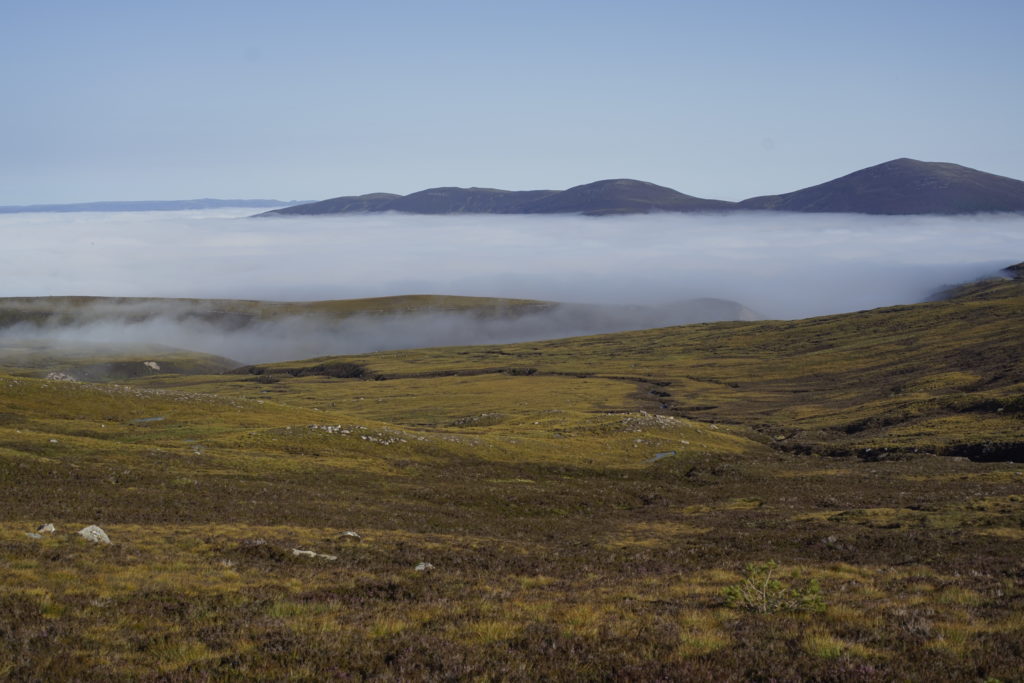
The same principles can be applied across the globe: our botanists document the identity, distribution, and conservation status of plant species in biodiverse and economically-important groups such as forest trees, gingers, and grasses, so we can monitor threats and identify priorities for conservation. For example, we recently analysed location data from herbarium specimens to show that the elevation at which iconic Himalayan poppies (Meconopsis spp.) are found has shifted upwards by an average of over 300m since 1970. On the other side of the world, we are studying how climate change could impact upon coffee yields and the livelihoods of local farmers in Colombia.
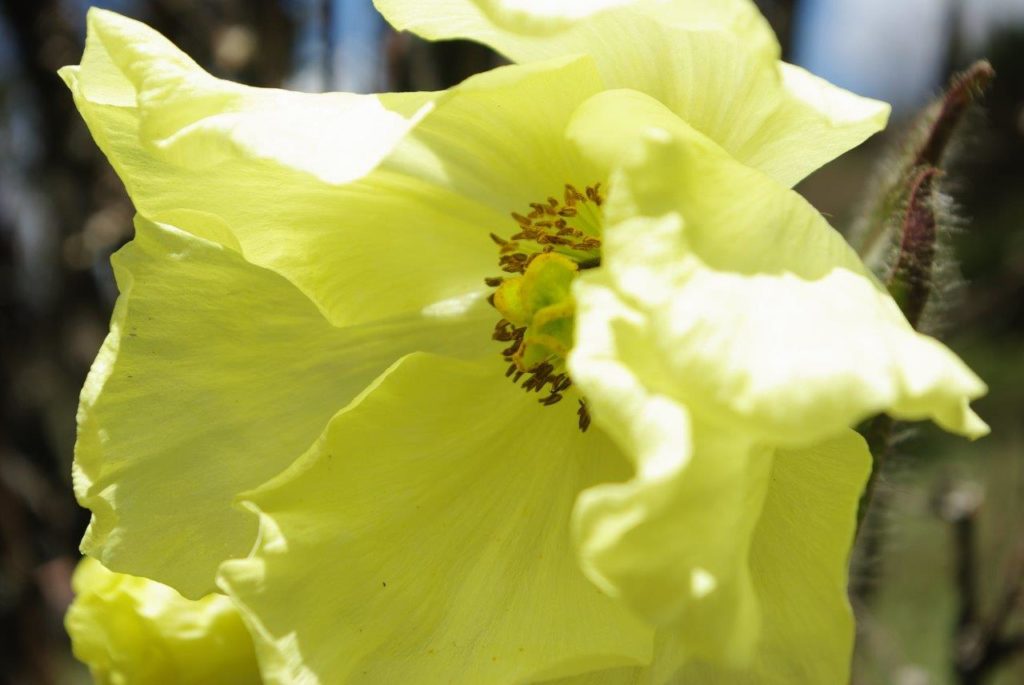
The action
Nowhere is exempt from climate change. On Scotland’s mountains we rescue, nurture, reinforce, and reintroduce rare species, increasing both their numbers and genetic diversity, to improve resilience to future climate change. In three years we have doubled the number of wild populations of the beautiful alpine-blue sowthistle (Cicerbita alpina) in the Cairngorms, helping offset potential losses due to increasingly extreme weather events.
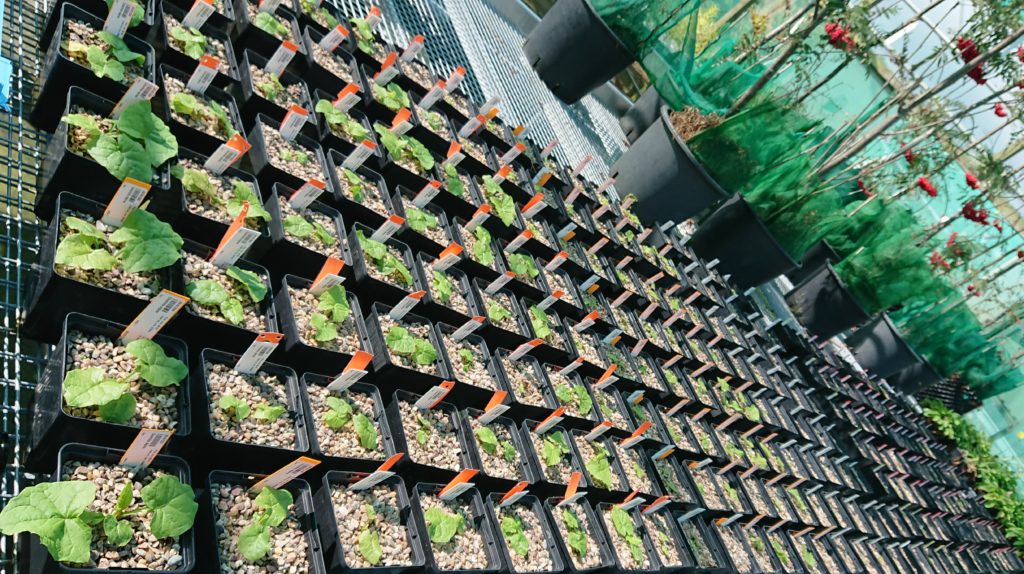
We work with landowners and conservation organisations to manage Scotland’s globally important ecosystems, including Europe’s best examples of internationally-rare temperate rainforest, providing data and toolkits, now in use in several National Nature Reserves, to identify the best management strategies for a changing climate.
On our coastlines, we work with local communities to deliver adaptation and mitigation activities, including physical intervention to encourage inter-tidal and marine diversity on coastal defences around Edinburgh. We support nature to become more resilient to sea level rise by removing non-native invasive species and translocating natives in their place, with funding from the Heritage Lottery Fund, European Green Infrastructure Programme, and Scottish Natural Heritage’s Biodiversity Challenge Fund.
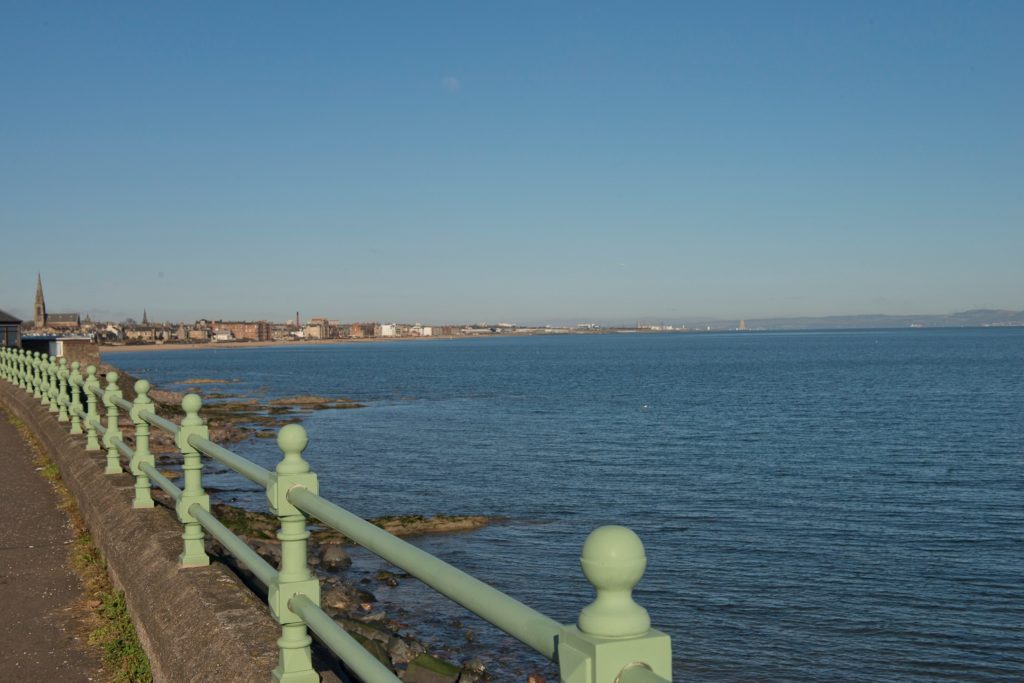
As part of Edinburgh City Council’s Edinburgh ‘Living Landscapes’ project, we pioneer green infrastructure projects to support climate resilience in the city, such as ‘depaving’ to protect urban communities from inundation. Our raingarden, developed with Heriot Watt University, demonstrates how planting schemes can reduce flooding and benefit native biodiversity. Our garden at Dawyck, in the Scottish Borders, became the first carbon-neutral botanic garden in the UK through an innovative combination of green roofing, a hydro-electric energy scheme, biomass heating, and electric vehicle charging points, which are now installed at all four of our sites.
Around the world our work helps reduce and reverse biodiversity loss, in turn sequestering carbon from the atmosphere. Our botanical data helps ensure that economic development is sustainable and focused only on the most resilient landscapes. For example, in Oman we identified 43 Important Plant Areas which are now incorporated and protected in the government’s twenty-year National Spatial Strategy, and in China our analyses of forest cover helped identify areas where plantation agriculture, such as rubber, will not be economically-viable, thus discouraging deforestation of these sites. In Africa, our economic analyses shed light on the long-term sustainability of large-scale afforestation schemes for carbon-capture, suggesting alternative solutions that might be more effective; while in Afghanistan we helped communities adopt efficient stove technologies, leading to a more than 30% decrease in woody plant extraction, simultaneously reducing both biodiversity losses and carbon emissions.
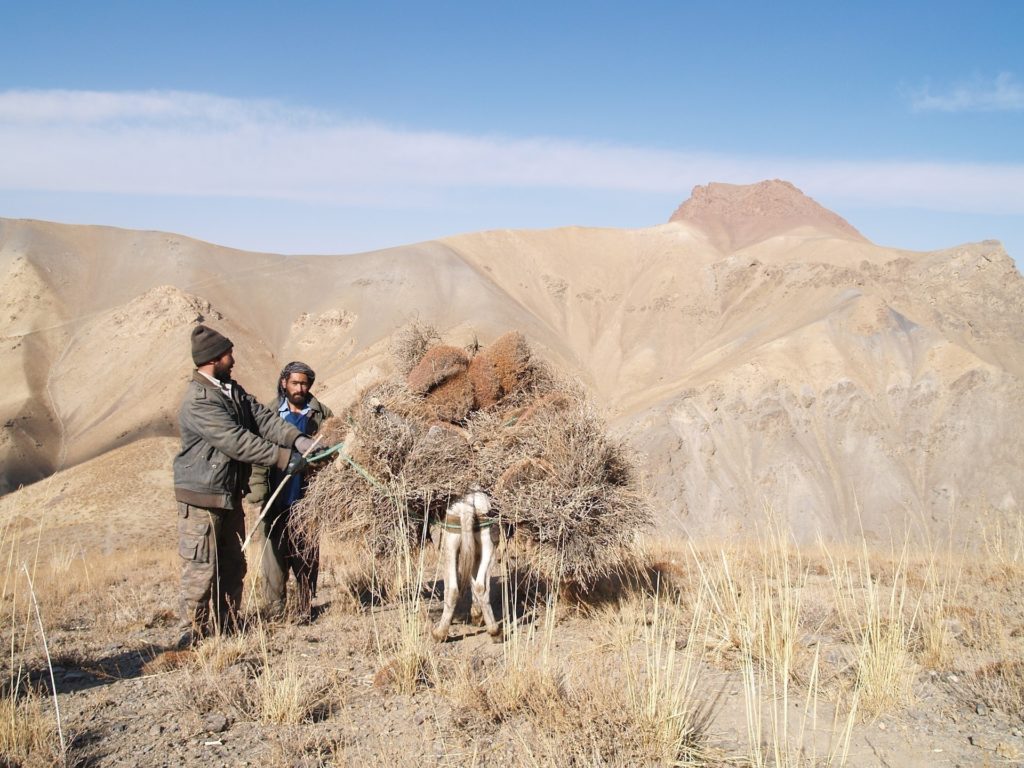
Emerging pests and diseases are a growing threat as the climate emergency bites. Our Plant Health programme – one of the most rigorous in the world – plays a growing role in protecting Scotland’s natural environment, horticultural and agricultural sectors from potentially devastating pathogens, through an early-warning network, strict plant quarantine procedures, and investigation of resistant varieties. At the same time, our research into wild relatives of crop plants supports the development of cultivated species and varieties, such as drought-tolerant cacao and heirloom potatoes, best able to withstand the effects of climate change and minimise food shortages.
The inspiration
As one of Scotland’s best loved visitor attractions, we have a hugely important role in engaging those that pass through our gates with the big issues facing the natural world, and empowering them to make a difference in their own lives. Our visitors range from the youngest primary 1 pupil on our schools programmes, to the culture-vulture enjoying our acclaimed immersive art experience, ‘Below the Blanket,’ celebrating the Flow Country, Scotland’s most important terrestrial carbon sink. Hands-on involvement is key to full engagement, and our volunteer phenology programme, regular ‘Bioblitzes’ and citizen science events bring people face to face with our climate science.
Across the world, anyone can access our expert teaching on climate-related issues such as pollinator security via our online learning facility, PropaGate. We also bring our expertise to the international policy conversation through events such as the Xishuangbanna International Symposium on Plant Conversation, and the World Forum on the Global Strategy for Plant Conservation, later this month, aiming to establish a strategic plan for plant conservation over the next decade.
The future
Our imminent Edinburgh Biomes programme will protect and dramatically enhance our scientific and engagement activities, while also reducing our own direct carbon emissions: carbon losses from our glasshouses will be cut by 12%, and energy use by up to 50%, through sustainable energy generation, increased efficiencies and reduced heat losses.
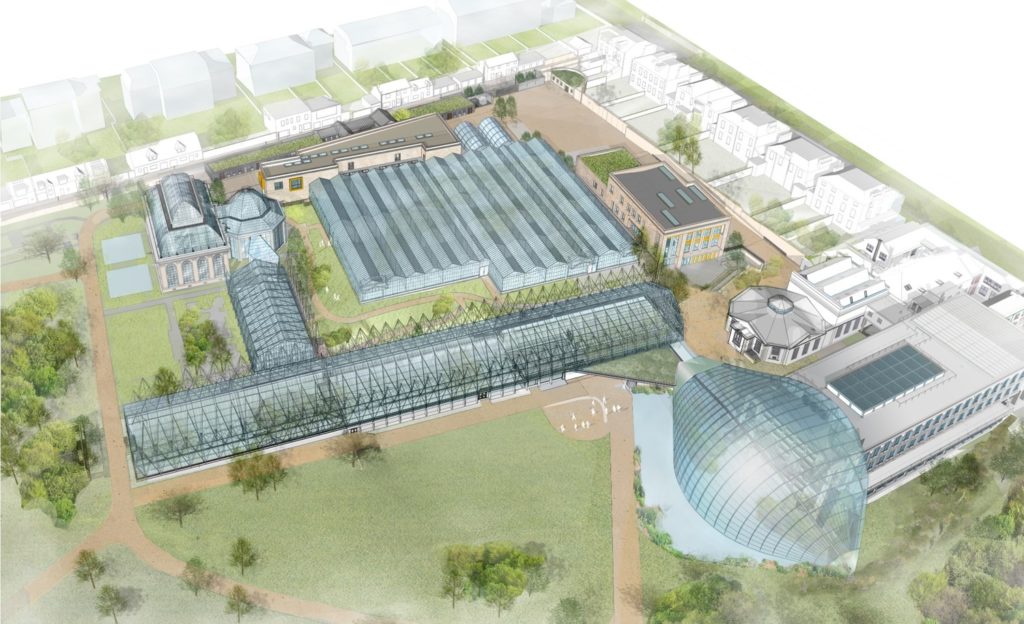
What can you do?
First and foremost, come and see us at one of our four gardens across Scotland. Immerse yourself in the beauty of plants from around the world and learn about our work to protect them from the worst effects of the climate emergency.
Make changes in your own life. Could you switch to a renewable energy supplier? Use public transport more? Eat less meat and dairy? Or holiday by train, boat or bicycle – make the journey part of the adventure!
Try to influence those in power – both business and government – by spending wisely, joining campaigns, and using your vote.
Support our work to monitor, minimise, and mitigate the climate emergency around the world. If you are able, you can support us financially here. Keep up to date with our climate science via our climate emergency page.

